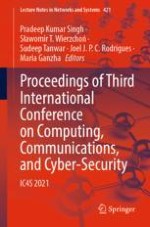2023 | OriginalPaper | Chapter
Customer Churn Prediction in Banking Industry Using Power Bi
Authors : Awe M. Oluwatoyin, Sanjay Misra, John Wejin, Abhavya Gautam, Ranjan Kumar Behera, Ravin Ahuja
Published in: Proceedings of Third International Conference on Computing, Communications, and Cyber-Security
Publisher: Springer Nature Singapore
Activate our intelligent search to find suitable subject content or patents.
Select sections of text to find matching patents with Artificial Intelligence. powered by
Select sections of text to find additional relevant content using AI-assisted search. powered by
